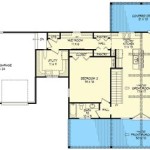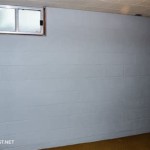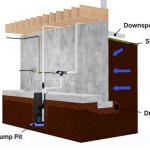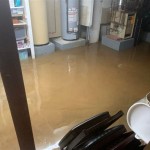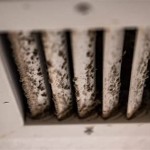How to Fix Seeping Water in Your Basement
A damp basement can significantly impact the comfort and value of your home. Whether it’s a persistent drip or an outright flood, water infiltration can lead to mold growth, structural damage, and costly repairs. Addressing the root cause of basement seepage is crucial, and while DIY solutions can be tempting, professional help is often recommended for complex issues. This article aims to provide a comprehensive guide on identifying the problem and outlining appropriate solutions.
Identifying the Source of the Water
The first step to fixing basement seepage is pinpoint the source of the water. This will determine the most effective repair strategy.
Here are some common sources to consider:
- Downspouts and Gutters: Improperly directed gutters or clogged downspouts can lead to water flowing towards the foundation, especially during heavy rain.
- Foundation Cracks: Cracks in the foundation walls can allow ground water to seep into the basement. These cracks may be hairline or more substantial.
- Leaky Pipes: Damaged or leaking pipes can contribute to dampness. This could include water supply pipes, sewer lines, or even condensate lines from HVAC units.
- Poor Drainage: Inadequate drainage around the foundation can cause water to pool, putting pressure on the walls and potentially leading to seepage.
- Hydrostatic Pressure: During heavy rain, the ground surrounding the foundation can become saturated, creating hydrostatic pressure that can force water through cracks and porous areas.
Careful inspection of the basement is essential for identification. Look for signs of water damage, such as staining, efflorescence (a white powdery residue), or mold growth. Note the location of the seepage and any potential sources nearby. You may need to contact a qualified contractor for a detailed assessment, particularly if the problem involves structural issues.
Solutions for Basement Seepage
Once the source of the problem is identified, appropriate solutions can be implemented. The range of solutions can be simple or complex, depending on the severity of the seepage and the underlying cause. Here are some common approaches:
1. Exterior Drainage Improvements
This approach focuses on preventing water from reaching the foundation in the first place.
- Gutter and Downspout Repair: Ensure gutters are properly sloped to direct water away from the house. Clean gutters regularly to prevent clogging. Extend downspouts at least 5 feet away from the foundation.
- Grading: Proper grading around the foundation is critical. Ensure a gentle slope away from the house with a minimum 6-inch drop for every 10 feet.
- French Drains: A French drain is a trench filled with gravel that collects water and directs it away from the foundation. They can be installed at the perimeter of the house or at the foundation wall.
- Sump Pump: For areas with high water tables, a sump pump can be installed to remove excess water that collects in a pit.
2. Interior Waterproofing
This approach involves addressing the basement walls and floor to prevent water from entering.
- Interior Drainage System: This system involves installing a drainage mat and a sump pump to collect and remove water that seeps through cracks or porous areas in the foundation walls.
- Sealing Cracks: Cracks in foundation walls can be sealed with polyurethane or epoxy-based sealant. For larger cracks, a professional may recommend using concrete patching or injections.
- Basement Waterproofing Membranes: Waterproofing membranes are applied to basement walls and floors to create a barrier against water.
3. Foundation Repair
In cases of severe foundation issues, more comprehensive repair work may be necessary.
- Foundation Crack Repair: Large cracks in the foundation may require specialized repair techniques, such as carbon fiber reinforcement or foundation underpinning.
- Foundation Walls: If the foundation walls are severely compromised, they may need to be replaced.
It's essential to consult with a qualified contractor for foundation repairs, as they involve structural integrity and safety.
Addressing basement seepage is a proactive approach to maintaining a healthy and comfortable home. By identifying the source of the water and implementing appropriate solutions, homeowners can create a dry and safe environment for their families.

Wet Basement Diy Repair Guide Radonseal

Why Your Basement Leaks In Heavy Rain

Why Your Basement Leaks In Heavy Rain

Help My Basement Leaks When It Rains News And Events For Systems Inc

The Best Methods For Basement Leak Repair Acculevel

How To Fix Water Leaking Into Basement After Heavy Rain Gj Macrae

What Is A Good Way To Fix Seeping Water In My Basement Aaa Foundation Repair Wichita

How To Fix And Prevent A Leaking Basement Projex

Finding And Fixing Basement Leaks How To Waterproof Your

Repairing Leaking Basement Walls What Works And Doesn T Work For Wall Leak Repairs
Related Posts
